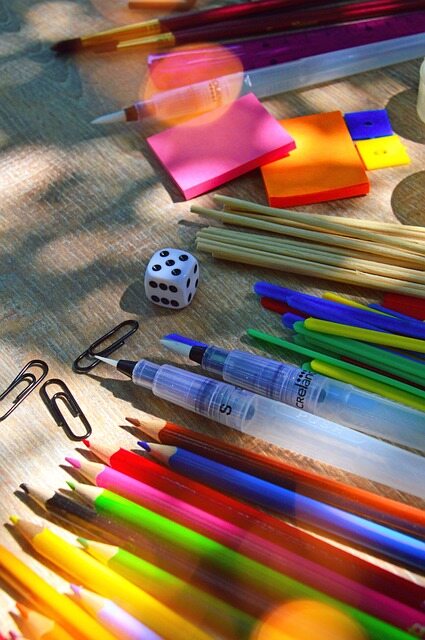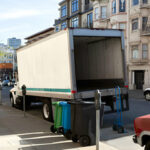
As parents, ensuring the well-being of our children is a top priority, especially when it comes to their school supplies. School environments can be breeding grounds for germs, and proper cleaning and disinfection play a crucial role in keeping our little ones healthy. In this comprehensive guide, we will explore everything you need to know about cleaning and disinfecting your child’s school supplies.
From backpacks to lunchboxes, let’s dive into simple yet effective strategies to maintain a clean and safe environment for your child.
The Importance of Cleaning and Disinfecting School Supplies
1. Preventing Illness Spread
School supplies, often shared among children, can harbor germs and contribute to the spread of illnesses. Regular cleaning and disinfection help prevent the transmission of infections.
2. Promoting a Healthy Learning Environment
A clean and sanitized environment supports a healthier learning experience. It reduces the risk of absenteeism due to illnesses and ensures a conducive atmosphere for both students and teachers.
3. Extending the Lifespan of Supplies
Proper care not only safeguards your child’s health but also extends the lifespan of school supplies. Regular cleaning prevents wear and tear, ensuring that items last throughout the school year.
Cleaning Backpacks
Emptying and Shaking Out Debris:
Start by emptying the backpack and shaking out any loose debris. This removes crumbs, dirt, and small items that may have accumulated.
Spot Cleaning Stains:
Address stains promptly with a mild detergent or stain remover suitable for the backpack material. Test in an inconspicuous area first to ensure it won’t damage the fabric.
Disinfecting High-Touch Areas:
Wipe down high-touch areas like zippers, handles, and straps with disinfectant wipes. Pay attention to seams and crevices where germs can hide.
Cleaning Lunchboxes
Removing Food Residues:
After each use, empty and remove any leftover food residues from the lunchbox. Insulated lunchboxes may require extra attention to prevent lingering odors.
Handwashing Before and After Use:
Encourage your child to wash their hands before and after handling their lunchbox. This minimizes the transfer of germs to and from the box.
Interior Wipe Down:
Wipe down the interior with a damp cloth and mild soap. For stubborn odors, a mixture of baking soda and water can help neutralize smells.
Cleaning Notebooks and Binders
Regular Surface Cleaning:
Regularly clean the surfaces of notebooks and binders with a damp cloth. This removes dust and prevents the buildup of grime.
Avoiding Excessive Moisture:
While cleaning, avoid excessive moisture that could damage paper or cardboard. Use a damp—not wet—cloth to gently wipe down surfaces.
Disinfecting Plastic Binders:
For plastic binders, disinfecting wipes or a solution of water and vinegar can be used to kill germs. Ensure the binder is thoroughly dry before storing papers inside.
Cleaning Pencils, Pens, and Markers
Removing Lead Residues:
For pencils, erase any lead residues regularly. Use a quality eraser to avoid smudging and maintain the cleanliness of the writing.
Disinfecting Plastic and Metal Parts:
Disinfect plastic and metal parts of pens and markers with disinfectant wipes. Ensure the writing tip is clean and free from any dried ink.
Storing in Pencil Cases:
Encourage your child to store pencils, pens, and markers in a designated pencil case. This prevents them from rolling around loose in the backpack, reducing the risk of damage and contamination.
Cleaning Art Supplies
Cleaning Paintbrushes and Tools:
After art projects, clean paintbrushes and other tools thoroughly. Use mild soap and water for water-based paints, and appropriate solvents for oil-based paints.
Wiping Down Containers:
Clean paint containers, palettes, and other art supplies with a damp cloth. Disinfecting wipes can be used for plastic or non-porous materials.
Storing in Sealable Bags:
For small art supplies like beads or sequins, consider storing them in sealable bags within the art supply box. This prevents spillage and makes cleaning easier.
Cleaning Electronics
Screen Cleaning:
Use a soft, lint-free cloth to clean screens on devices like tablets or laptops. Avoid harsh chemicals that can damage the screen coating.
Disinfecting Keyboards and Mouse:
Disinfect keyboard keys and the mouse with alcohol wipes. Ensure the devices are turned off before cleaning to prevent accidental clicks or keystrokes.
Charging Cable Maintenance:
Regularly inspect charging cables for wear and tear. Replace damaged cables promptly to avoid potential electrical hazards.
Cleaning School Shoes
Dirt Removal:
Encourage your child to remove excess dirt from their shoes before entering the house. A doormat outside and inside can help trap dirt particles.
Regular Shoe Cleaning:
Clean school shoes regularly with a damp cloth. For stubborn stains, a gentle soap solution can be used.
Proper Storage:
Store school shoes in a designated area to prevent them from tracking dirt throughout the house. This also helps maintain a clean and organized living space.
Hygiene Education: Empowering Your Child
Handwashing Routine:
Teach your child the importance of handwashing. A consistent handwashing routine, especially before meals and after using shared items, is a powerful preventive measure.
Respecting Personal Space:
Emphasize the concept of personal space and the importance of not sharing personal items like water bottles or stationery to minimize the risk of germ transmission.
Healthy Habits:
Instill healthy habits, such as covering the mouth and nose when sneezing or coughing, using tissues, and disposing of them properly. These habits contribute to a cleaner and healthier school environment.
Storage and Organization
Designated Storage Spaces:
Assign specific storage spaces for each type of school supply. This helps in maintaining an organized environment and makes cleaning routines more manageable.
Regular Decluttering:
Periodically declutter the backpack and storage areas. Remove unnecessary items and wipe down surfaces to prevent the accumulation of dust and debris.
Incorporating Labels:
Labeling storage containers and areas helps your child identify where each item belongs. This promotes a sense of responsibility and aids in maintaining order.
Conclusion
In conclusion, the cleanliness of your child’s school supplies goes beyond aesthetics—it directly impacts their health and learning experience. By incorporating simple and consistent cleaning practices into their routine, you create a clean slate for learning and foster a healthy school environment.
Remember, the key is to make these cleaning habits a part of your child’s daily routine, ensuring that they not only understand the importance of cleanliness but also take pride in maintaining their belongings. A little effort goes a long way in creating a conducive and hygienic space for your child’s educational journey. Here’s to a school year filled with cleanliness, health, and successful learning!







